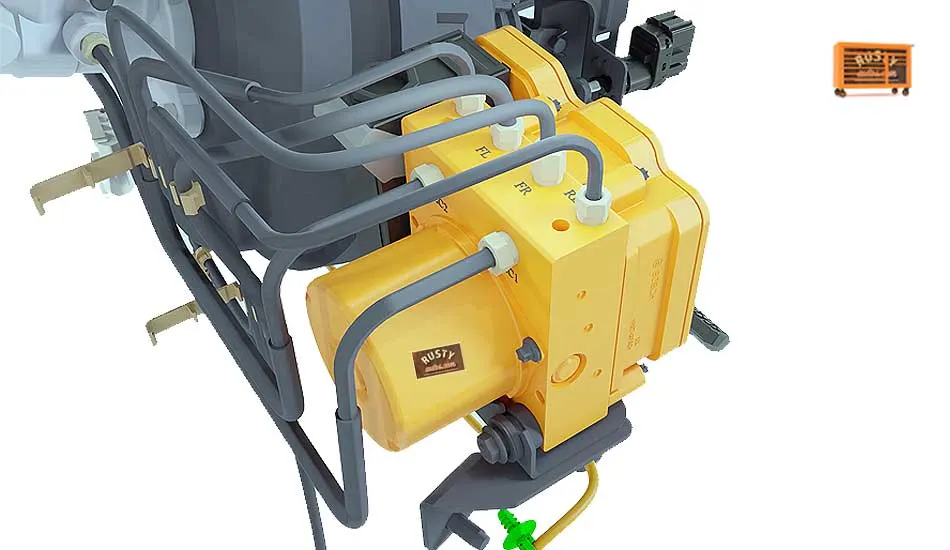
Anti-lock Braking System (ABS) is a safety system that became mandatory on all cars sold in North America in 2012.
ABS prevents the wheels of a vehicle from locking up. A lock-up or skid causes a vehicle to slide out of control in the direction of travel. Sliding then means the operator is unable to change direction to avoid a hazard.
In such a situation, the ABS takes over braking pressure and pulses the brakes to allow the wheel to turn once again and allow the operator to steer away from danger.
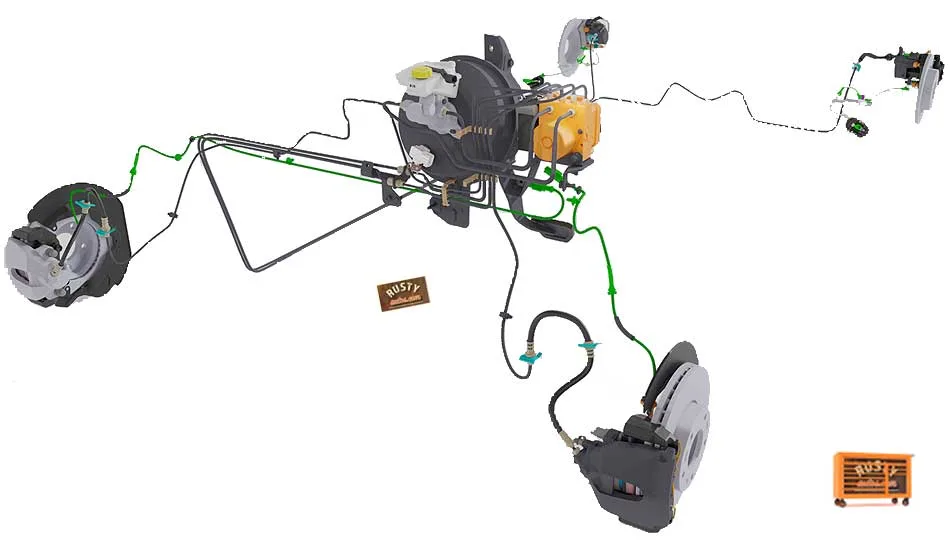
The ABS system relies upon core brake system components such as the brake master cylinder, brake lines, calipers, rotors, etc. But the ABS system itself relies on sensors and a controller (computer) to make sense of the data.
Core ABS components and what they do, are as follows:
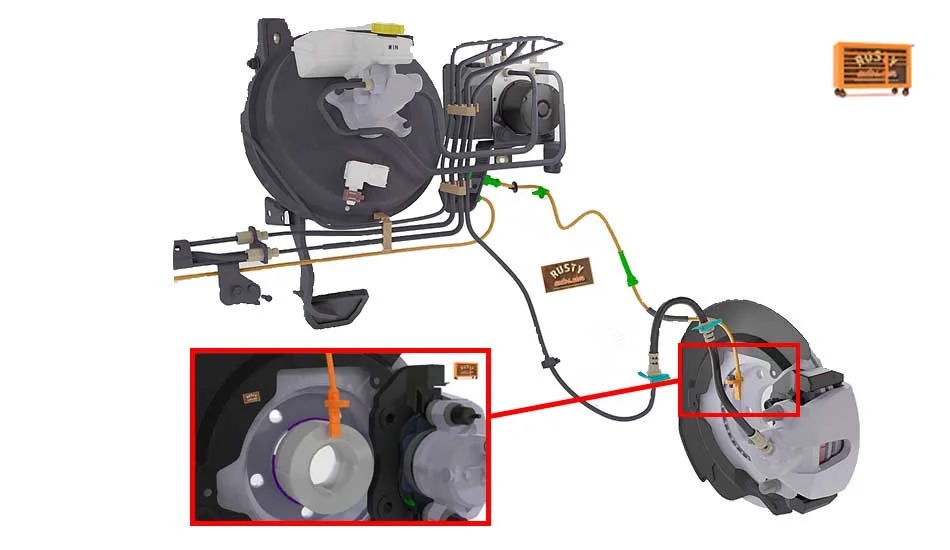
Wheel Speed Sensor (WSS) – a WSS at each wheel monitors speed and sends speed data to the controller.
ABS Controller – a computer that recognizes a skid in nanoseconds and takes corrective action via the pump and modulator
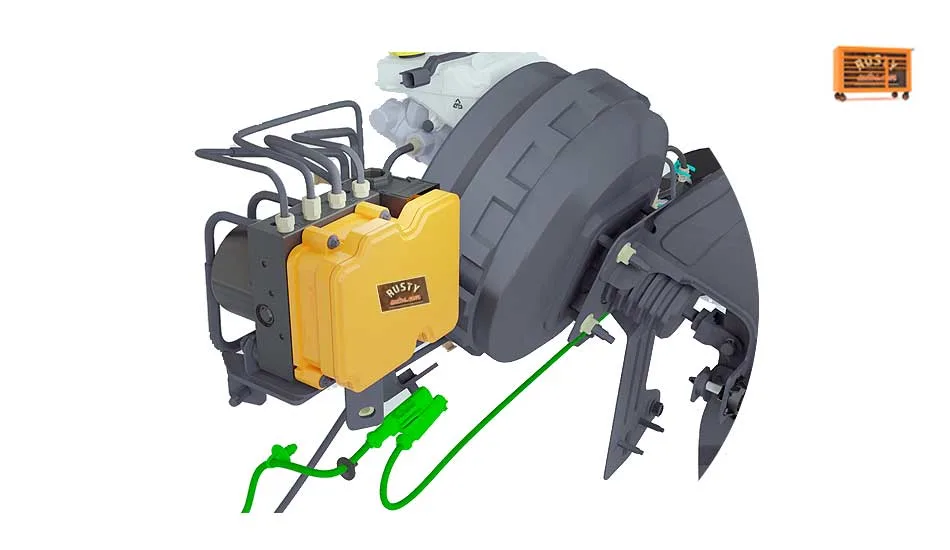
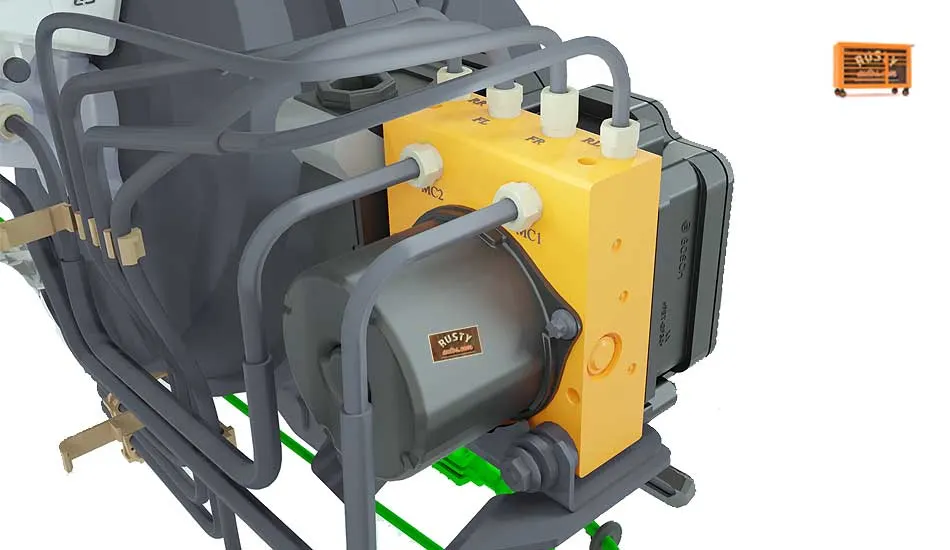
ABS Modulator – valves that the controller uses to manage precise brake pressure at each individual brake caliper
ABS Pump – hydraulic fluid pump that the controller uses to build brake pressure

Where’s ABS Located?
The ABS system consists of various core components and they are located in various locations on your car; they are as follows:
Wheel speed sensors (WSS) – Four total, one located in the suspension knuckle at each wheel.
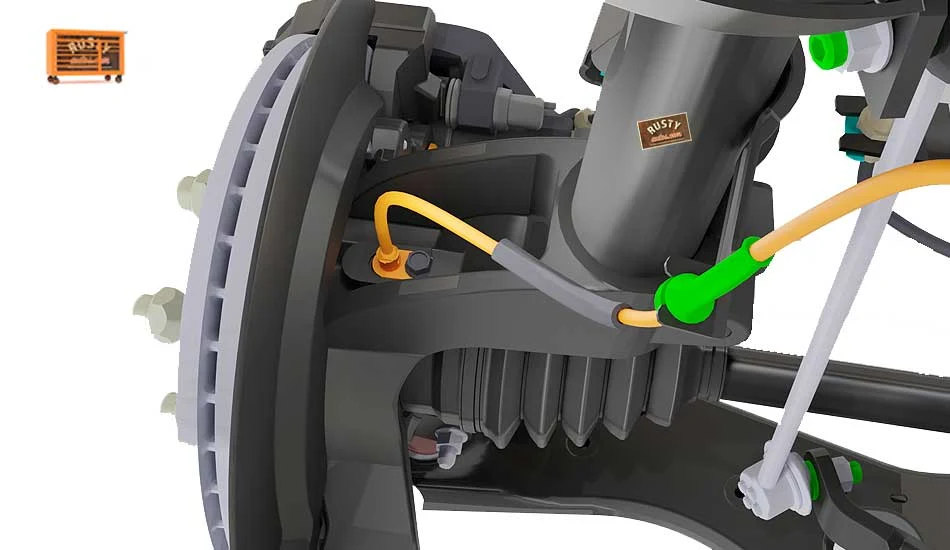
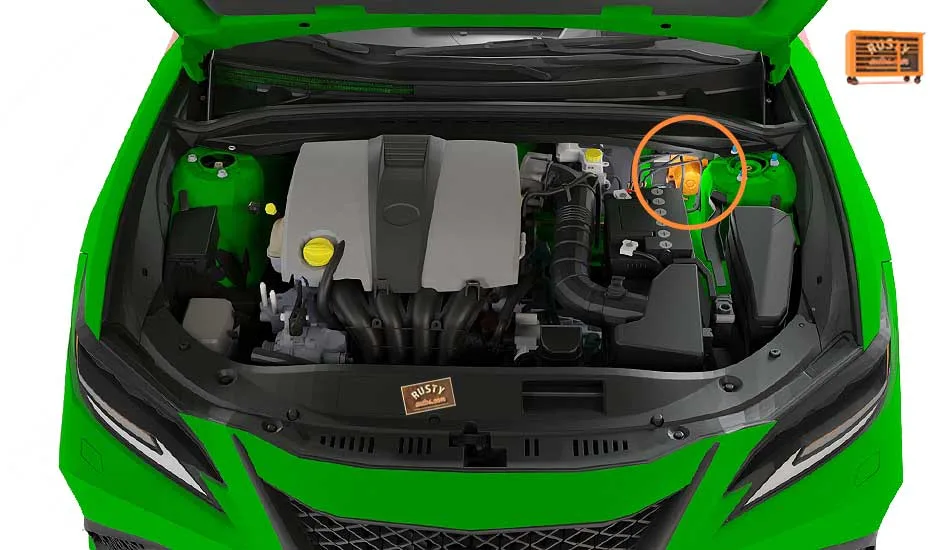
Control unit – control unit is located under the hood in various locations depending on the model and make.
Identification is simple, follow the brake lines from the master cylinder (located on the firewall directly behind the brake pedal assembly) to the ABS unit. You’ll recognize the ABS as it has six hard brake lines attached and a large electrical pigtail connector.
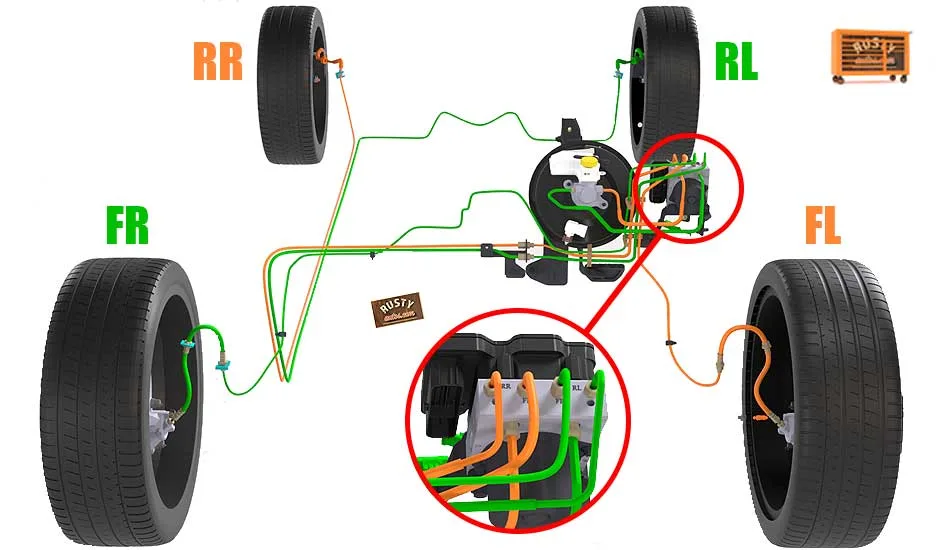

Modulator – modulator pump and the controller are one integrated unit.
As brake systems have evolved, various other braking technology has been ABS integrated, such as Brake Assist, Traction control, and Stability Control. These additional technologies require additional sensors such as steering angle sensors, yaw sensors, and brake pedal pressure sensors.
Common ABS Problems
ABS units are generally robust, but failures in the overall system are common; they include:
- Loose sensor wiring
- Faulty WSS
- Rodent-damaged ABS wiring insulation
- Modulator valve failure
- Pump failure
- Faulty controller
Other useful posts:
- About the Author
- Latest Posts
John Cunningham is an Automotive Technician and writer on Rustyautos.com. He’s been a mechanic for over twenty-five years and has worked for GM, Volvo, Volkswagen, Land Rover, and Jaguar dealerships.
John uses his know-how and experience to write fluff-free articles that help fellow gearheads with all aspects of vehicle ownership, including maintenance, repair, and troubleshooting.

